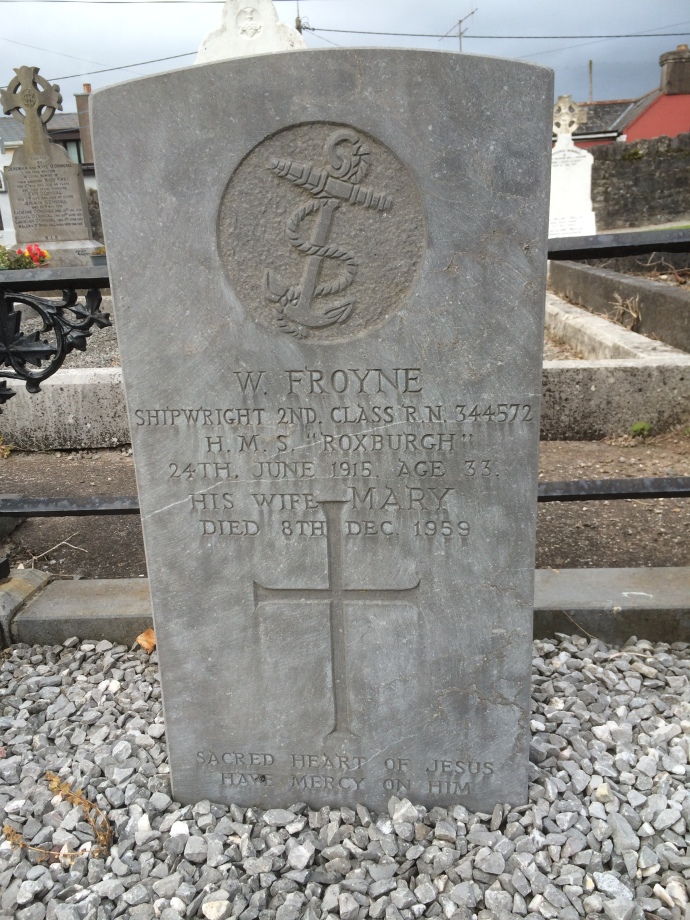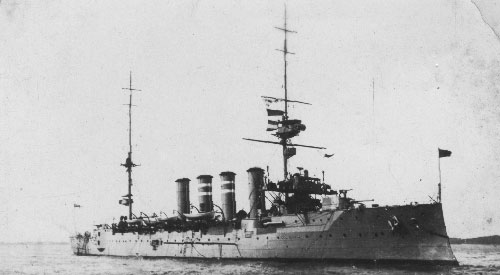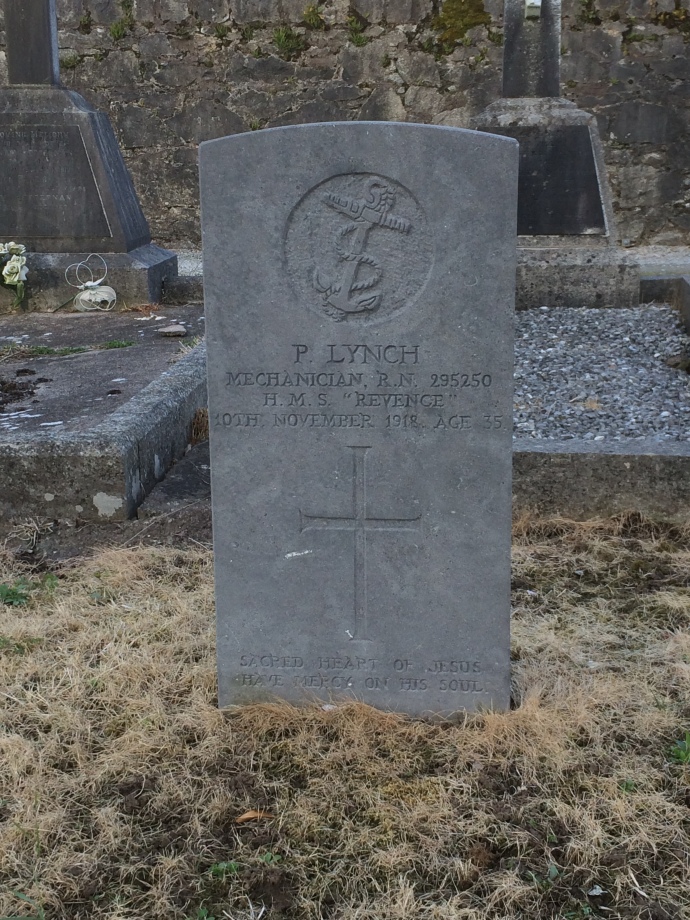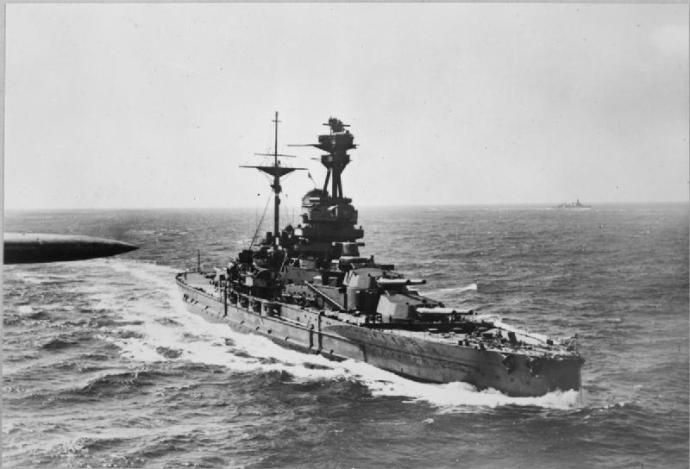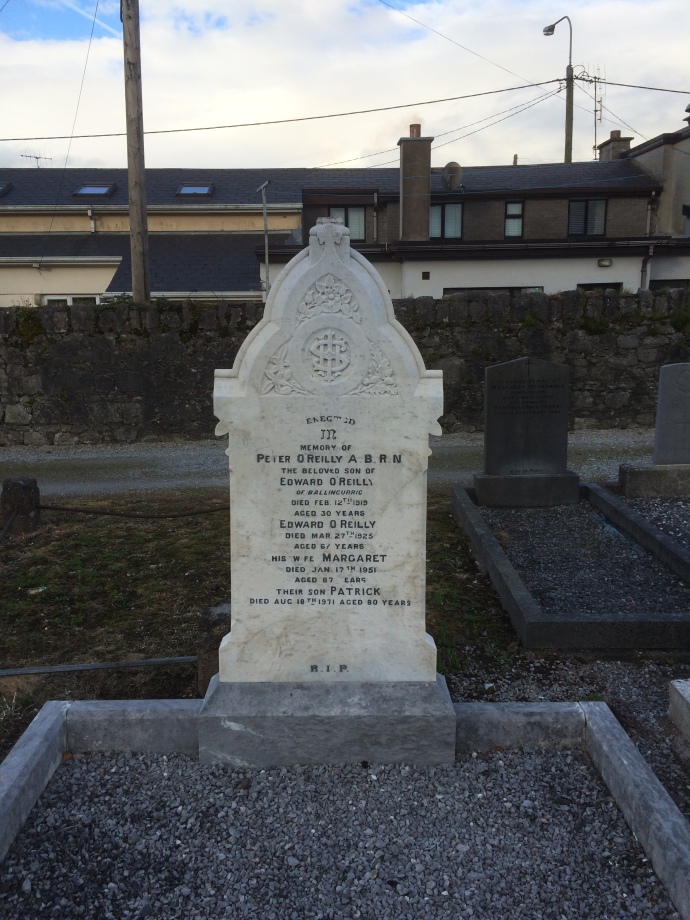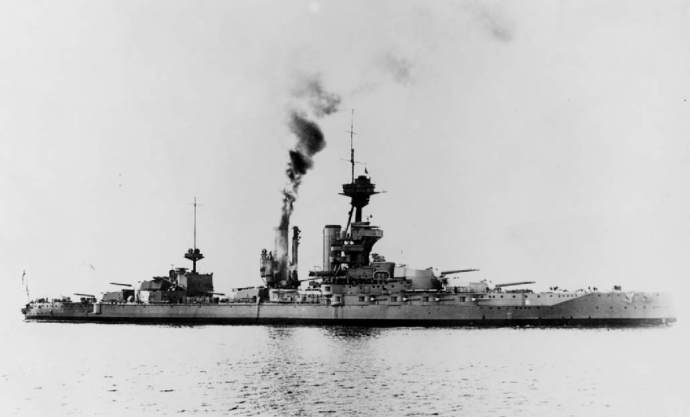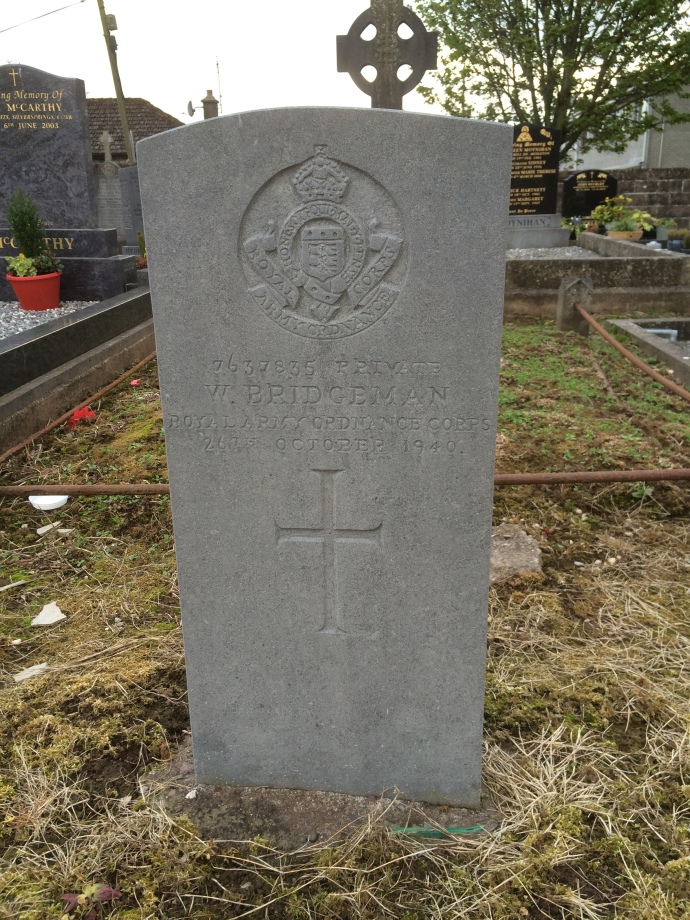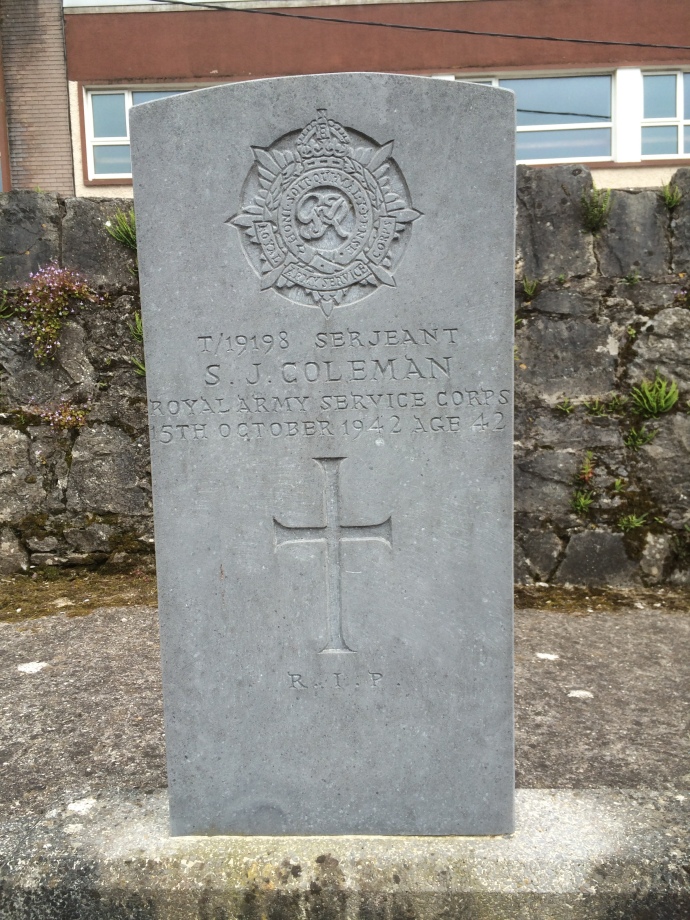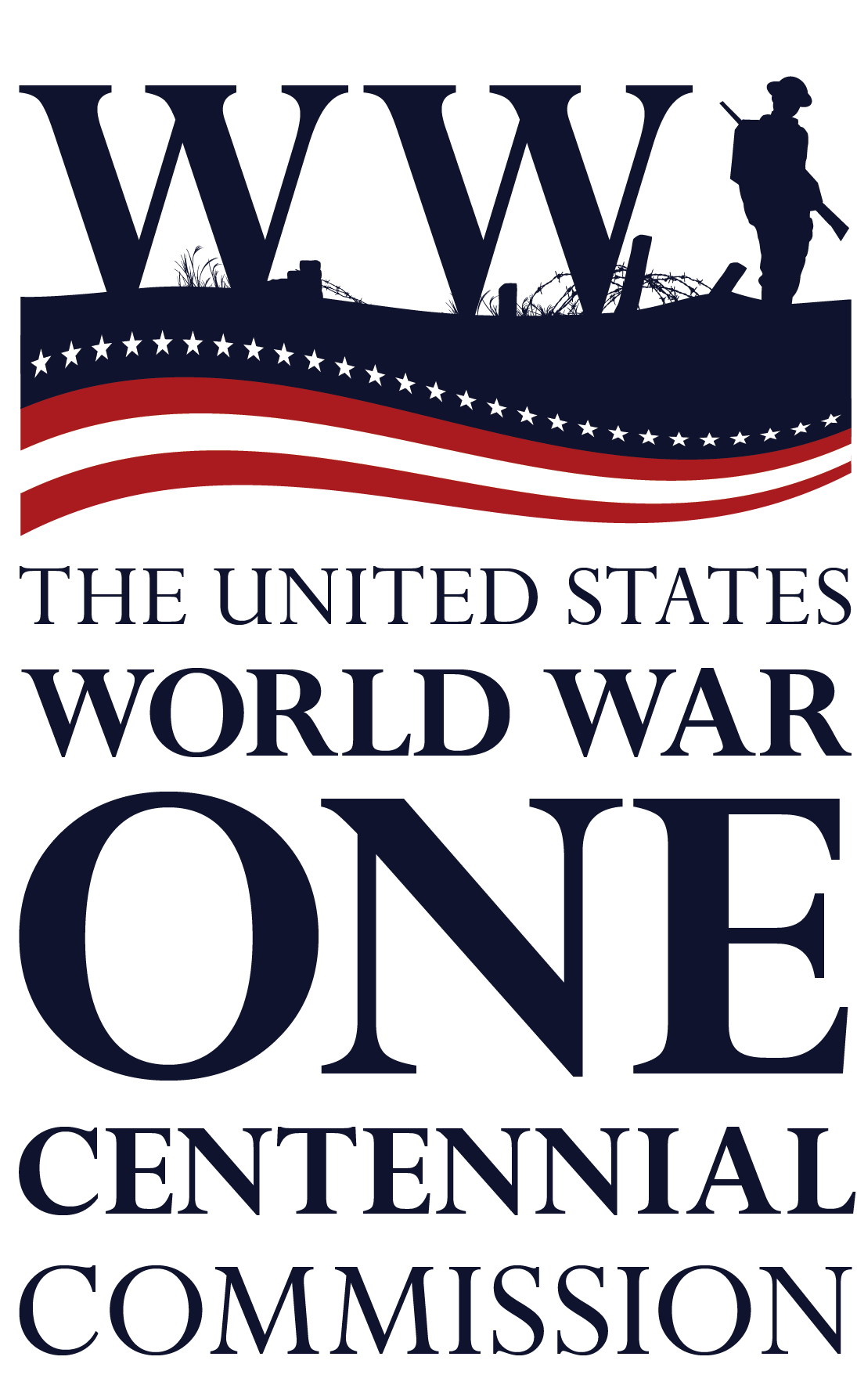During the last few years the site has shared a lot of material relating to the presence of American troops in East Cork during the First World War. You can check out all those posts on our U.S. Military in Ireland Centenary Project page.The major centre of the American presence on the eastern side of the harbour was the United States Naval Air Station at Aghada. Last year we were greatly fortunate to welcome Thom Dickerson to the area, whose father Thomas Dayton Dickerson served at the base during the war. Aside from bringing great knowledge of the base and his father’s experiences, Thom is also the curator of a wonderful collection of photographs that his father captured while stationed here in Cork. He shared that story with us during a public lecture in Midleton Library, and now has kindly agreed to expand on that for us in a guest post on a site. What follows is the story of US Navy Chief Thomas Dayton Dickerson, as told by his son Thom.
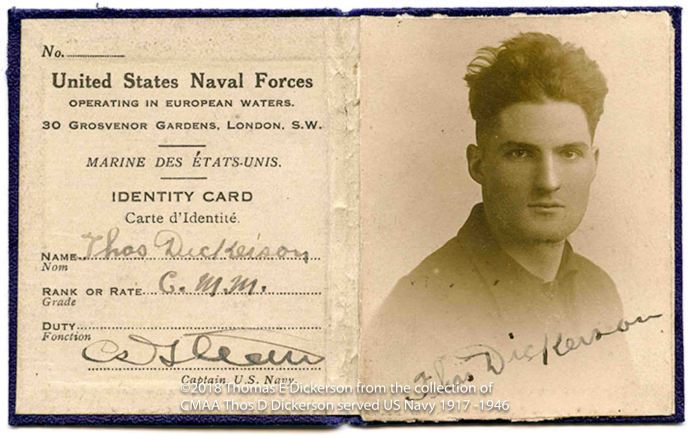
The First World War Identity Card of Thomas D Dickerson (Copyright Dickerson Collection)
Back in a time of peace, good times, and growing up in Summerland, California, my father, Thomas Dayton Dickerson joined the US Naval Reserves in Santa Barbara, California. It was the year 1915 and WW1 was already one year into the breach of a madness of what was to be the first taste of carnage and battle that our world would experience. His peace time job was being a chauffeur/ mechanic. His experience with automobile engines and aviation power plants began as a ride along mechanic racing on speedways in San Francisco, San Diego, and Los Angeles. Those race car drivers he participated with were Eddie Rickenbacker, Barney Oldfield, and one racer he personally worked with as a ride along mechanic was Glover Ruckstell. His first involvement with aviation was getting Lincoln Beachy’s aircraft ready to cross the Goleta valley in 1914. My father also worked with Alan Loughead (later changed to Lockheed) who had built a seaplane plant in Santa Barbara 1912. During the 1915 Pan Pacific International Exhibit in San Francisco, my father Tom also worked on Loughead’s F1 Flying boat. Mr Loughead gave patrons rides across the San Francisco Bay for $10.00 during the exhibit. (1)
Photos from the Dickerson Collection– A depth charge in the Channel; A ship underway; a submarine in the Irish Sea; A ship at her mooring (Slideshow)
Skipping to April 20, 1917, my father shipped out on the USS St Louis as a QM2 for convoy duty to Queenstown (now Cobh), Ireland. He made three convoy trips from April 1917 to November 1917 and was awarded two convoy chevrons for making the crossings in harm’s way of German subs patrolling the coastal waterways. He was then transferred to the USS Melville and was assigned to the signal bridge. His assignment to the USS Melville went from December 31, 1917 to April 16, 1918.
Images of officers, sailors and locals around the Aghada Base from the Dickerson Collection (Slideshow)
A new assignment started on June 30, 1918 at USNAS Queenstown, Ireland. During his time on assignment my father served between USNAS Queenstown and USNAS Aghada. He was assigned to transportation where he was part of the support staff building the bases and later for aircraft support. His travels took him between Queenstown, Dublin, Cork, Castletownbere (kite balloon station), Killarney, Wexford, Bantry, and Aghada. He assisted in assembly of the aircraft, Curtiss H16s, ferrying the aircraft as an aircrew mechanic with the pilot to the bases around Ireland. While serving in many duties during his service in Ireland, he was the official photographer who recorded people, places, and events during his tour. Many of the photographs and documents you will see in this article are from his albums he had collected during his time in the US Navy from 1917 -1946.
Images of the Aghada Base buildings and surrounds taken by Thomas during his service, from the Dickerson Collection (Slideshow)
On July 1 1918, Thomas D Dickerson’s rate was changed to Machinist Mate 2nd Class from Quarter Master 2nd Class. The Quarter Master rate was not his actual area of expertise or training in civilian life. It was his US Navy Reserve training where he became Quarter Master, but that rating was not suited to the skills he was required to utilise during the war. He continued his work in Queenstown and Aghada as transportation chief and plane captain on the H16s as the base was built and operations began on September 30, 1918. His role in the immediate conflict was to build the seaplanes from incoming aircraft parts received from the shipping docks landing in Queenstown. In addition to his duties he drove various vehicles to pick up messengers and officers for Admiralty HQ. Those operations would continue until November 11, 1918, when all hostilities ended the immediate conflict of the war.
Images of American seaplanes at the Aghada base from the Dickerson Collection (Slideshow)
The number of aircraft in operation in Aghada at the end of the war were 28 seaplanes. The number of flights totalled 64 sorties with 11,568 nautical miles covered during patrols over the Irish Sea and surrounding waterways.
Images of Officers, sailors and locals in and around the Aghada Base and in Ireland, from the Dickerson Collection (Slideshow)
After the war was over, Tom was advanced to MM1 on January 1, 1919 and on March 3, 1919 he was assigned to the Naval Supply base in Dublin, Ireland in charge of transportation. From March 31, 1919 to July 25, 1919, his last duty station in Ireland was Dublin, Naval Air Detachment. Not to top his extraordinary assignments in Ireland he was then advanced to CMM on June 1, 1919 to Naval Air Force, London, UK.
Photos Tom took during his various trips around Britain and Ireland from the Dickerson Collection (Slideshow)
Tom Dickerson CMM US Navy, was next placed in charge of transportation for the Allied Peace Mission going between the US Embassy in London and the US Embassy in Paris France.
The duties which followed were:
Naval Forces Europe, London from September, 30, 1919 – January 22, 1920 and confirmed Rating CMM on Oct 1,1919;
Naval Commission, Paris France from March 31, 1920 – June 25, 1920;
Paris Staff Office, Paris France from June 30, 1920 – August 4, 1920. Then on to the UK, assigned to the “Howden Detachment” in Bedford, England. Tom Dickerson and his US crew mates trained on rigid airships that were being built and sold to the US for convoy fleet support. He missed the tragic flight of the R38 (ZR2). His last assignment in the UK was the London Staff Office from September 30, 1921 – Oct 6, 1921. He then returned to America to assist building the ZR1 which was christened the USS Shenandoah and he flew on the entire maiden voyage across the United States and back, a story told in the National Geographic Jan 1925.
References
All images in this blog post remain the Copyright of the Thomas Dickerson, and cannot be reproduced without permission.
Thomas Dayton Dickerson ACMM National Archive Records and traveling personnel records.
Thom Dickerson Personal collection; Photographs and negative scans.

